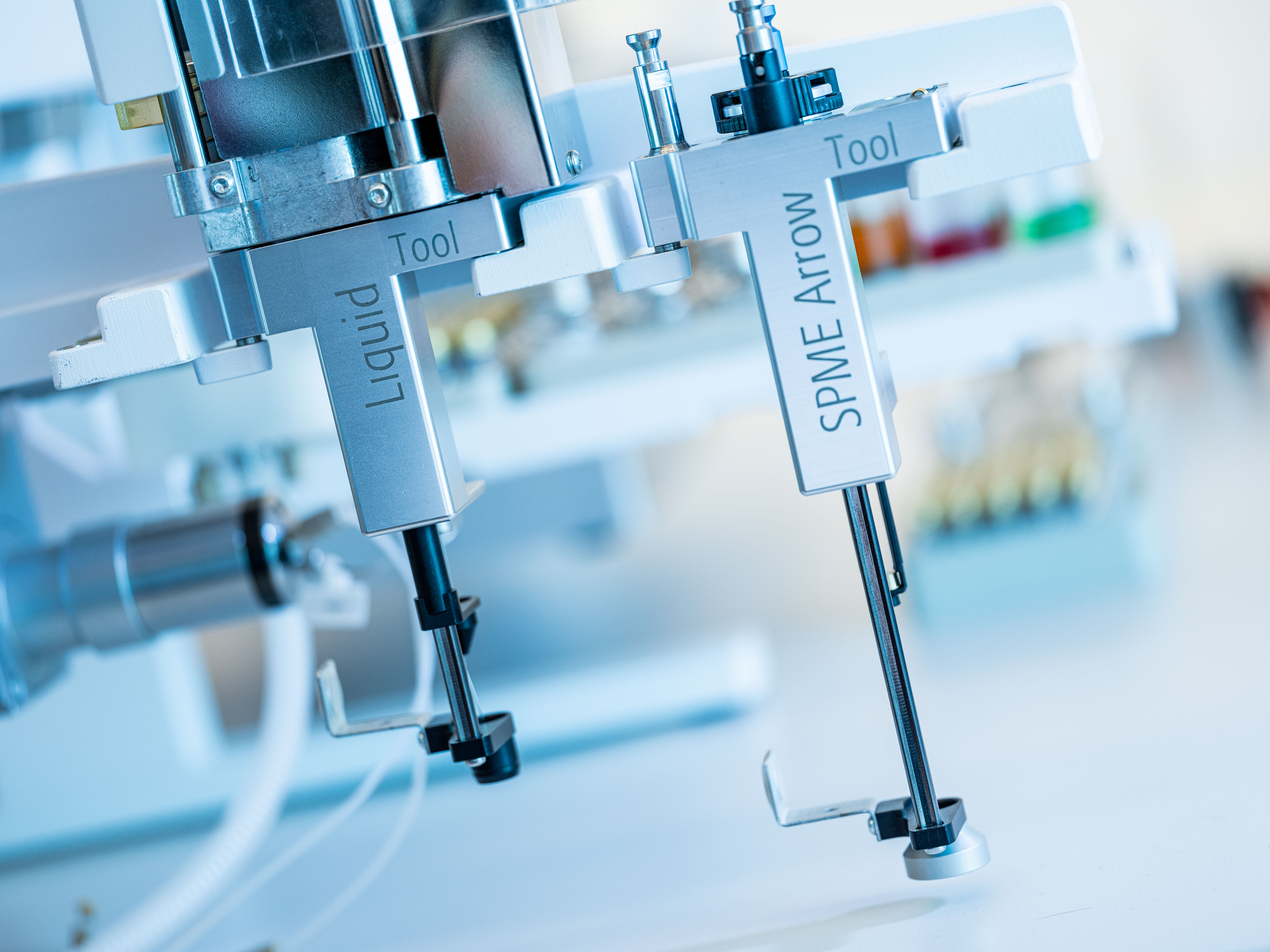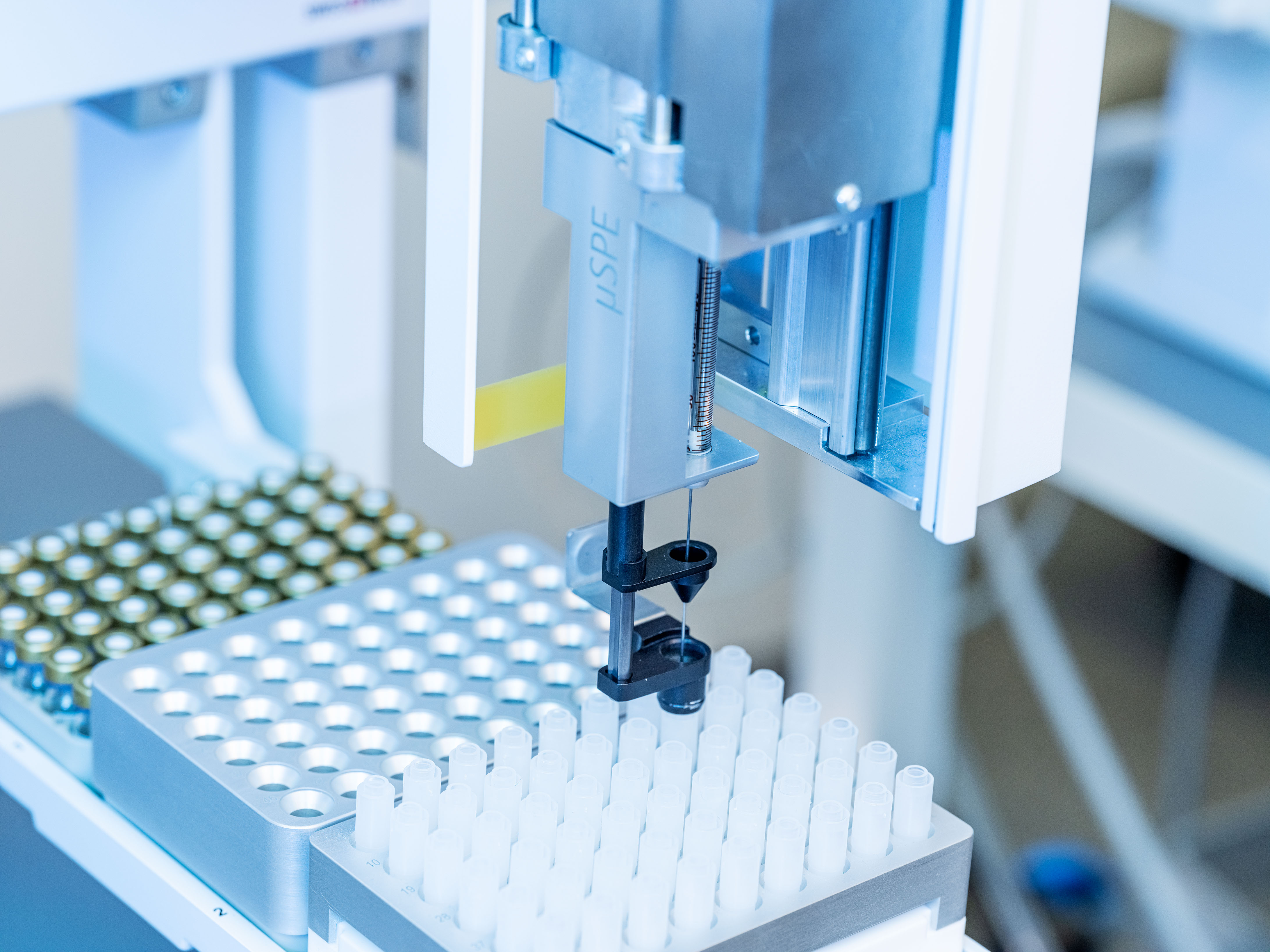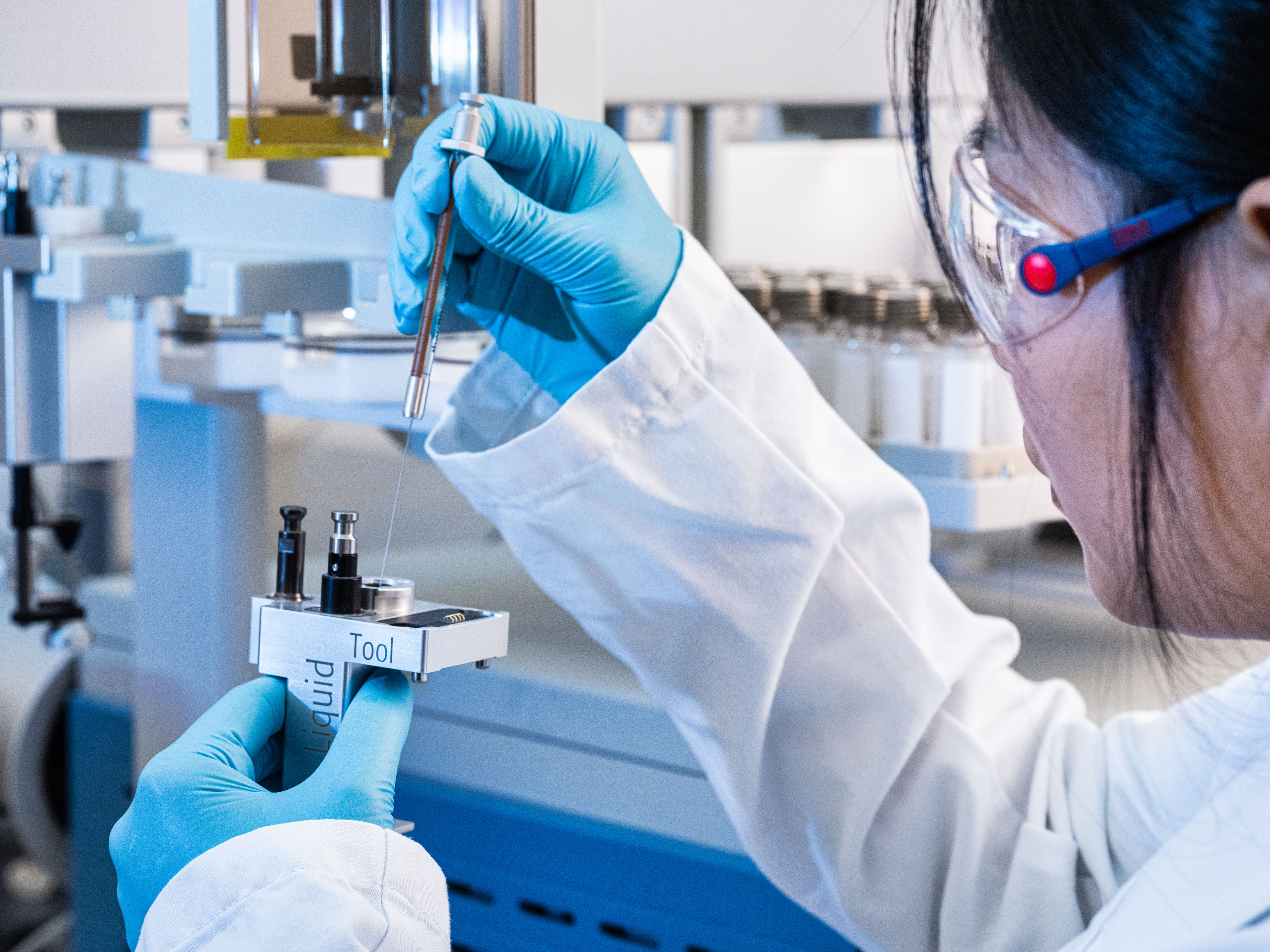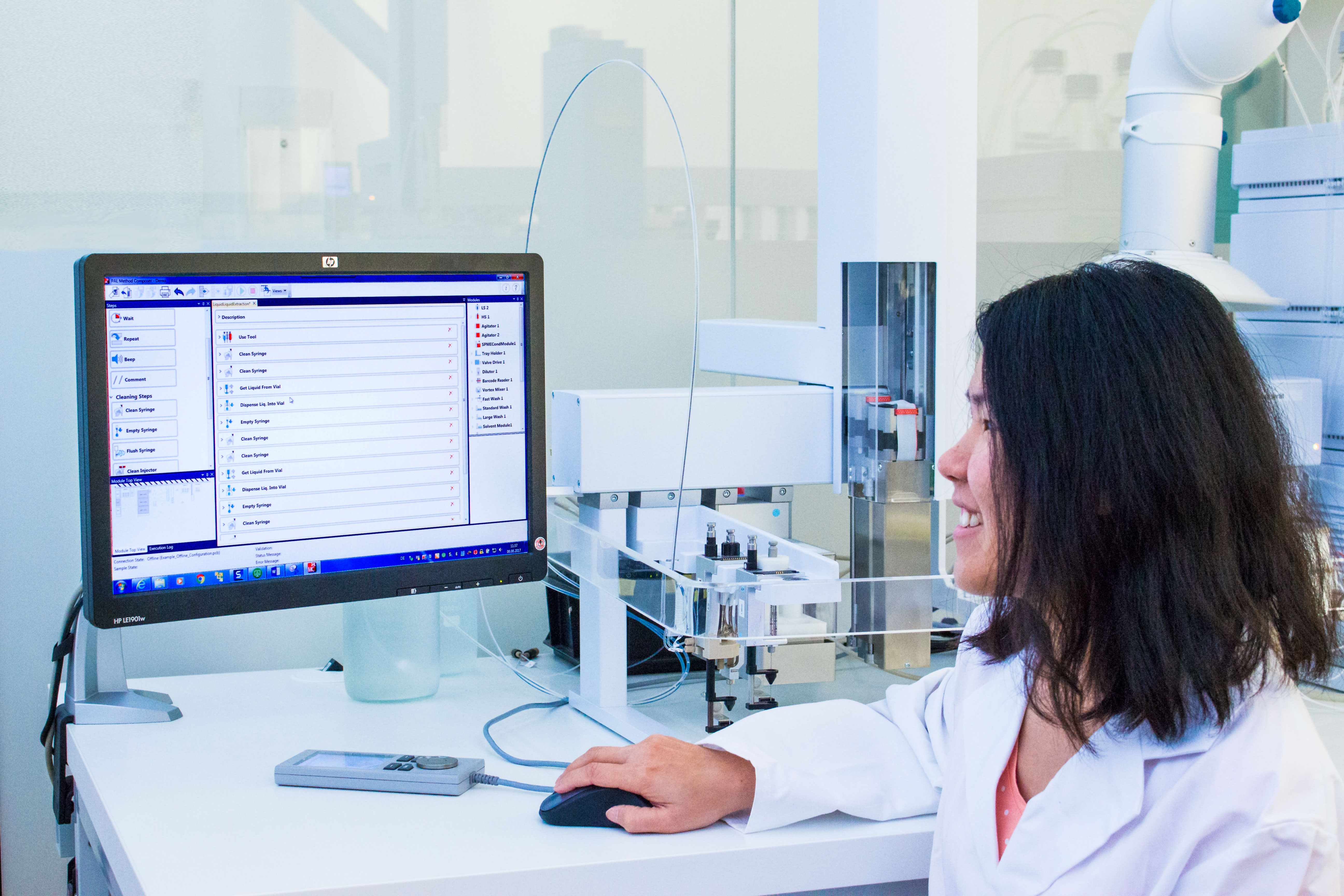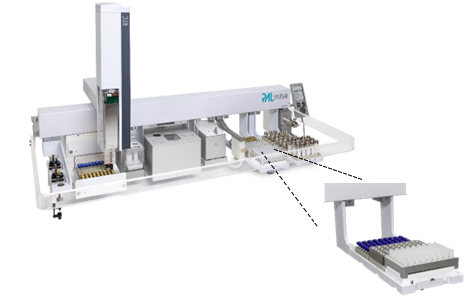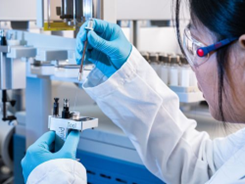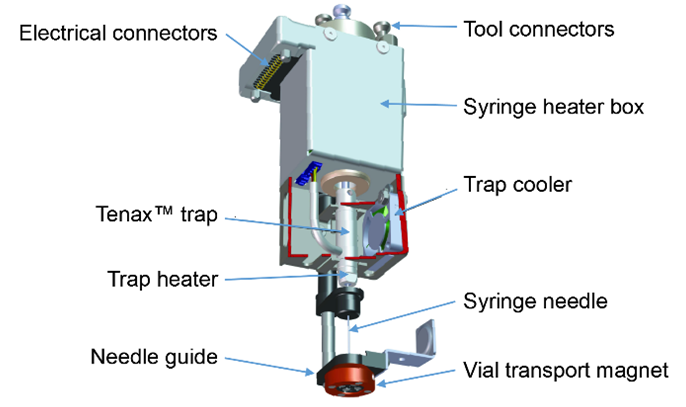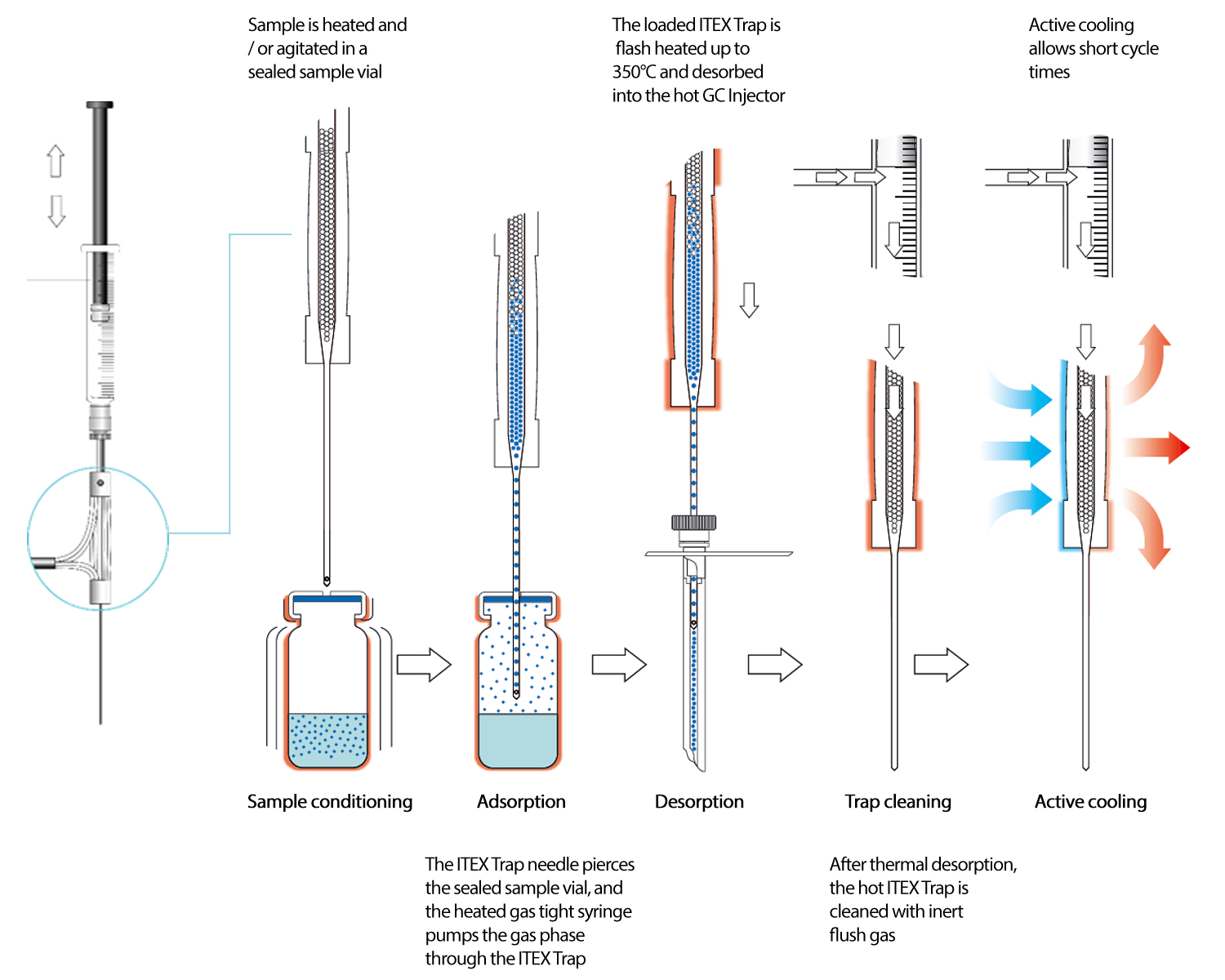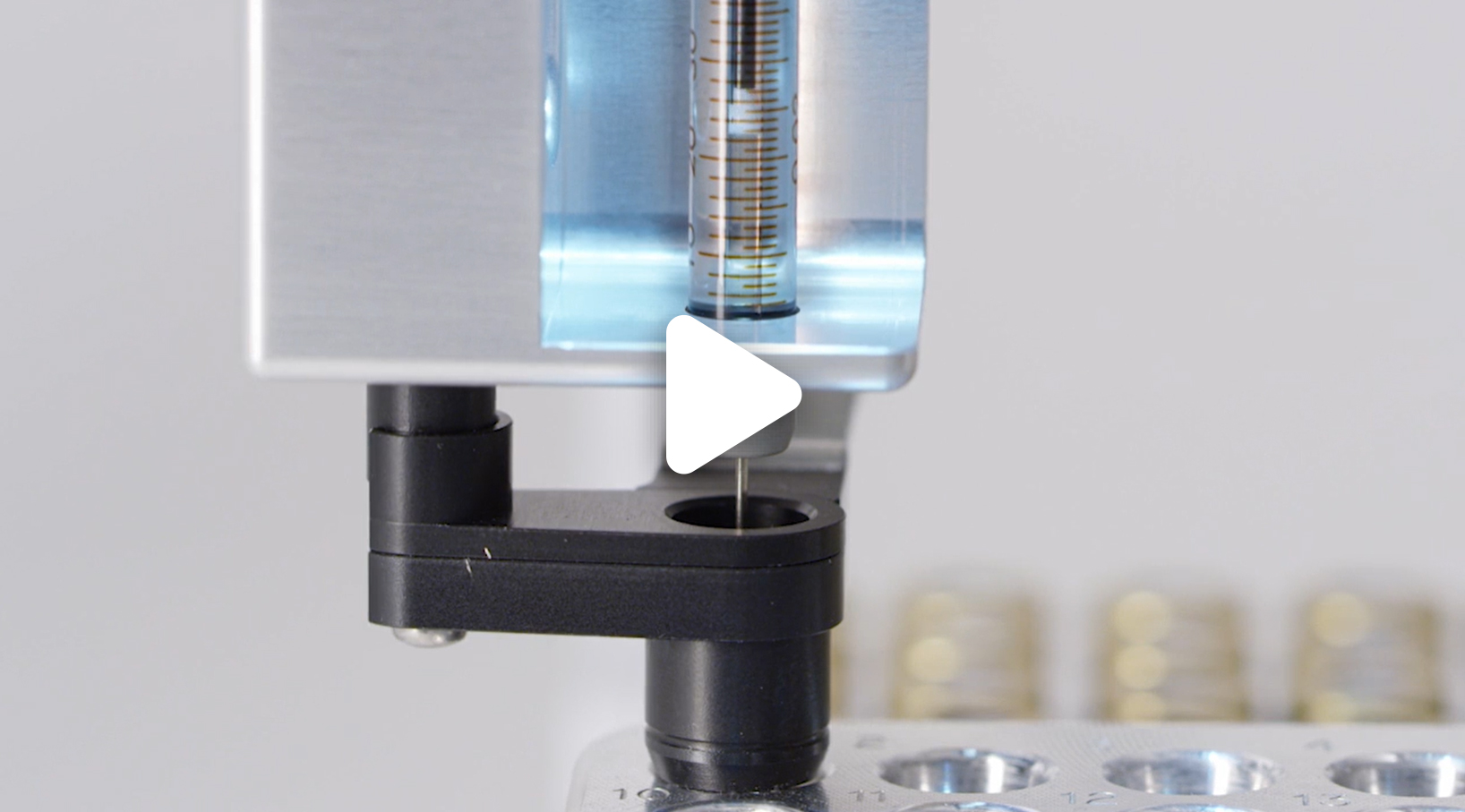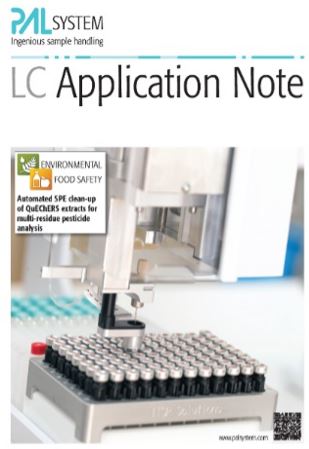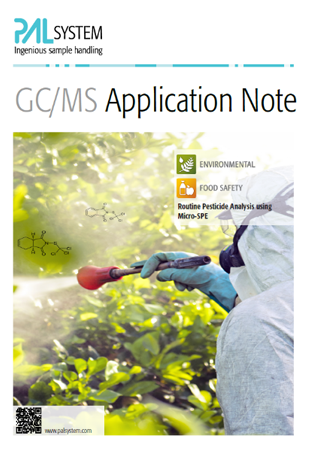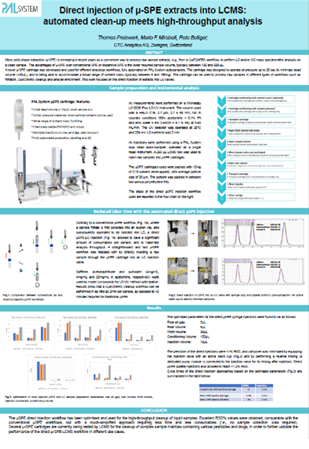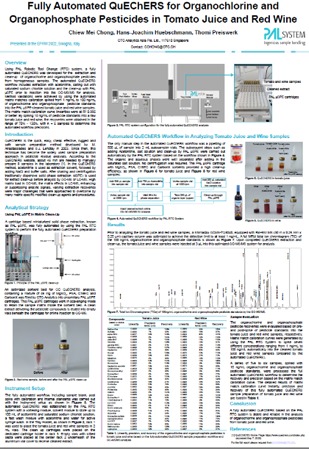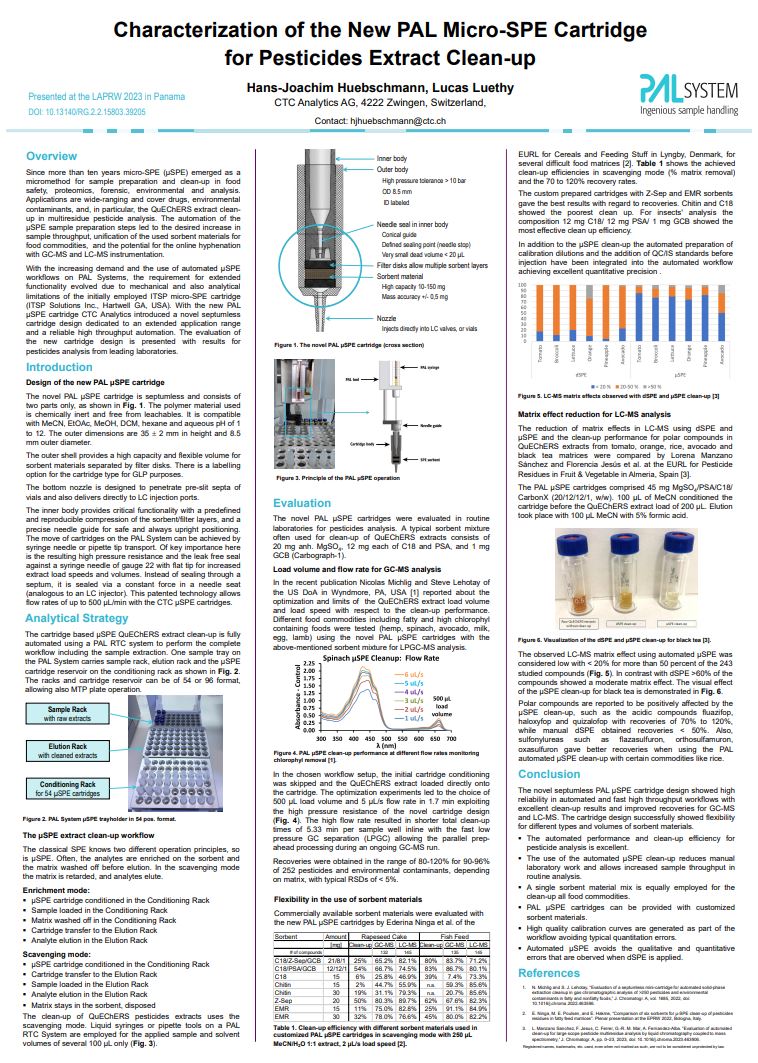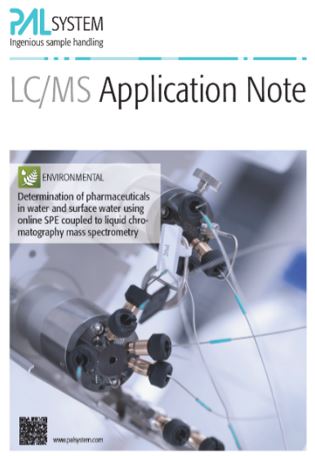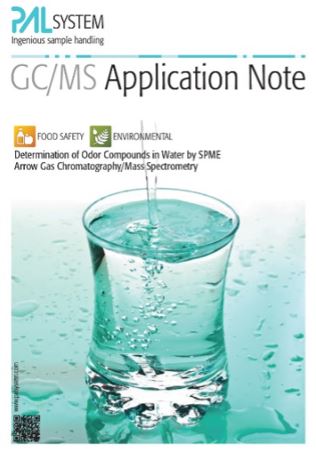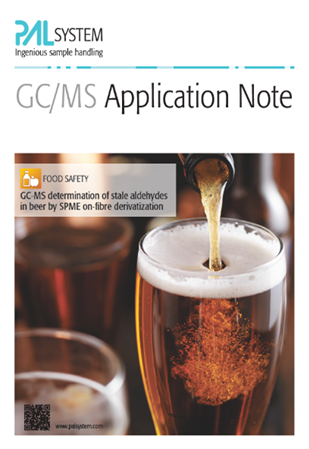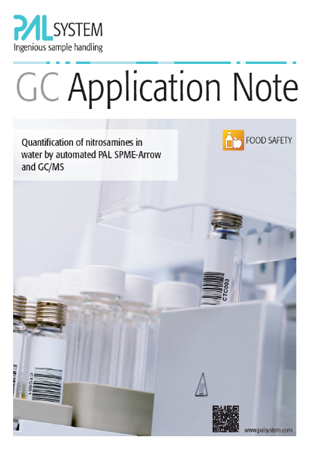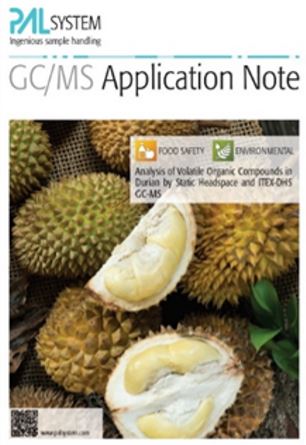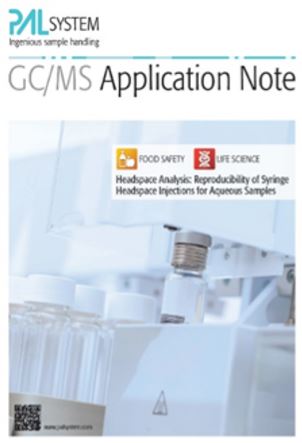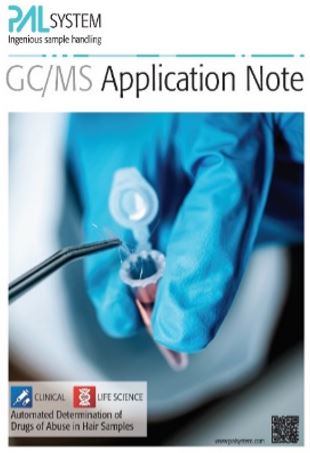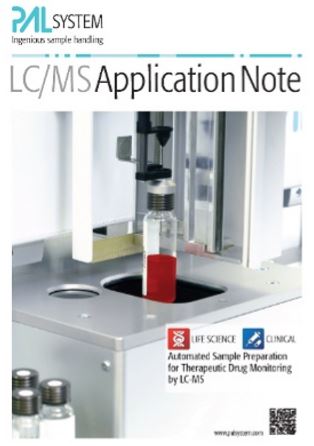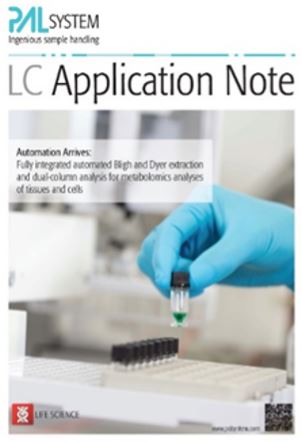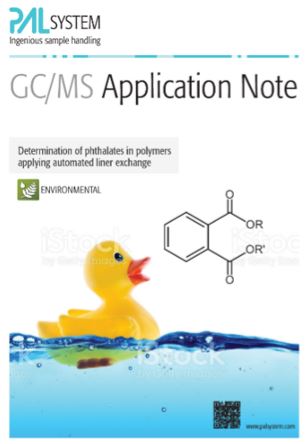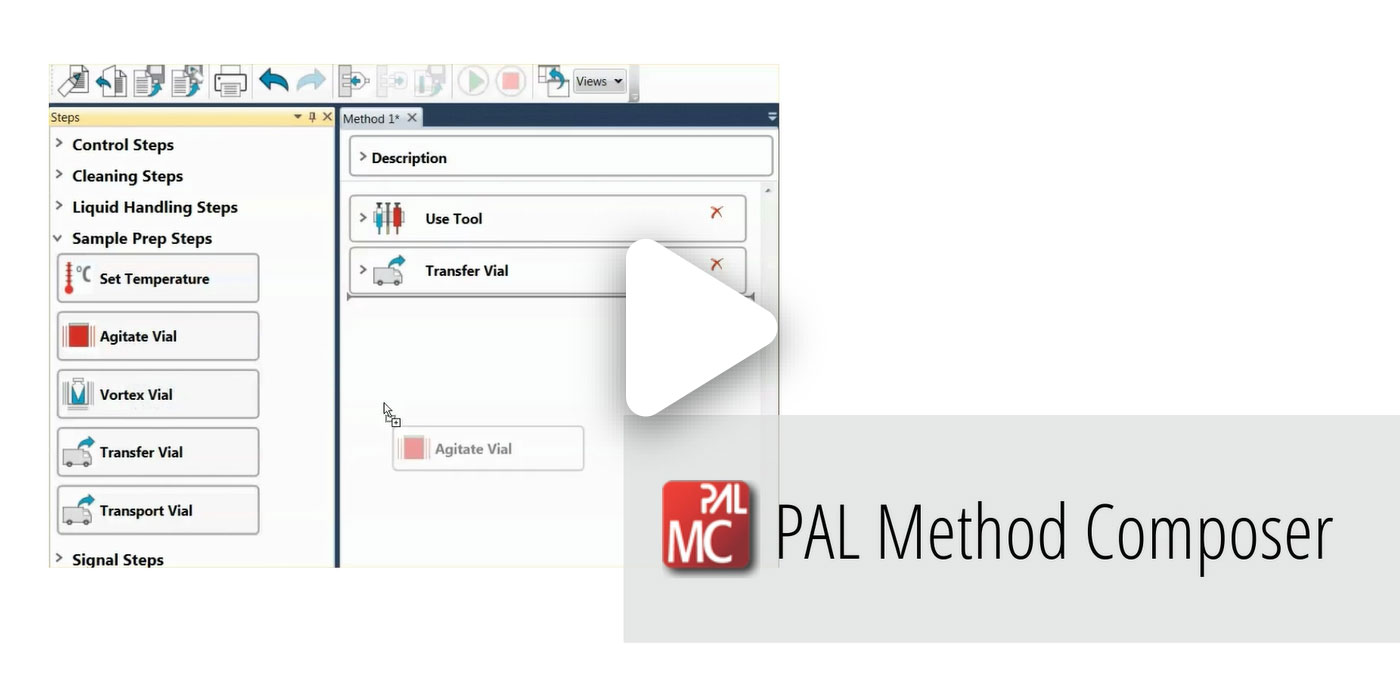Micromethods used for sample preparation aim to operate in the
microliter range. Instead of using milliliters of solvents or extracts in classical manual methods, only
microliter volumes are required. The PAL System is the industry standard for the automation of sample
preparation and extract delivery, designed for the automated liquid handling of microliter volumes in high
precision. Processing low micro volumes ideally fits the automated workflows of robotic sample preparation
using the PAL Systems.
The PAL System's automated workflows are compatible with established regulated
methods and can be applied directly to analytical instruments, both offline and online, for delivering prepared
extracts. After the automated sample preparation and extract clean-up stage, the PAL workflows can inject online
to the analysis instrument of the user’s choice, with microliter volumes. The next sample preparation or
extraction stage starts during analysis time, which has been precisely scheduled to be completed with the next
expected ready signal of the analysis system. Each sample is prepared on the same timeline for highest
reproducibility.
Liquid/liquid microextraction on the PAL System
When conducting trace analysis with small sample sizes, obtaining a representative
test portion from a bulk sample can be a significant challenge. Effective comminution and homogenization of
larger samples to smaller test portions are essential. For instance, in pesticide analysis of food samples,
cryomilling using a lab mill can produce reproducible and sensitive results with test portions as small as 1 g
6,7,8.
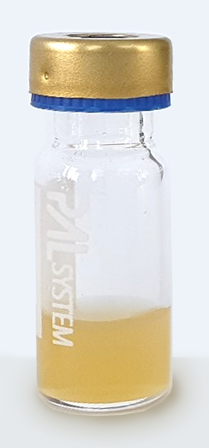
A
Orange juice sample in a 2 mL vial
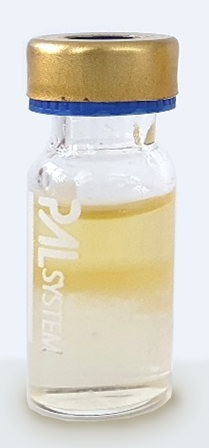
B
Liquid/liquid extraction with acetonitrile
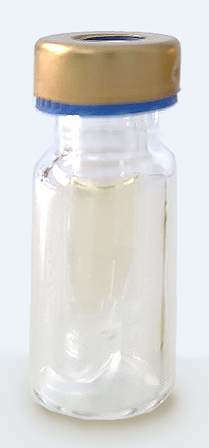
C
Cleaned extract for GC-MS and LC-MS analysis
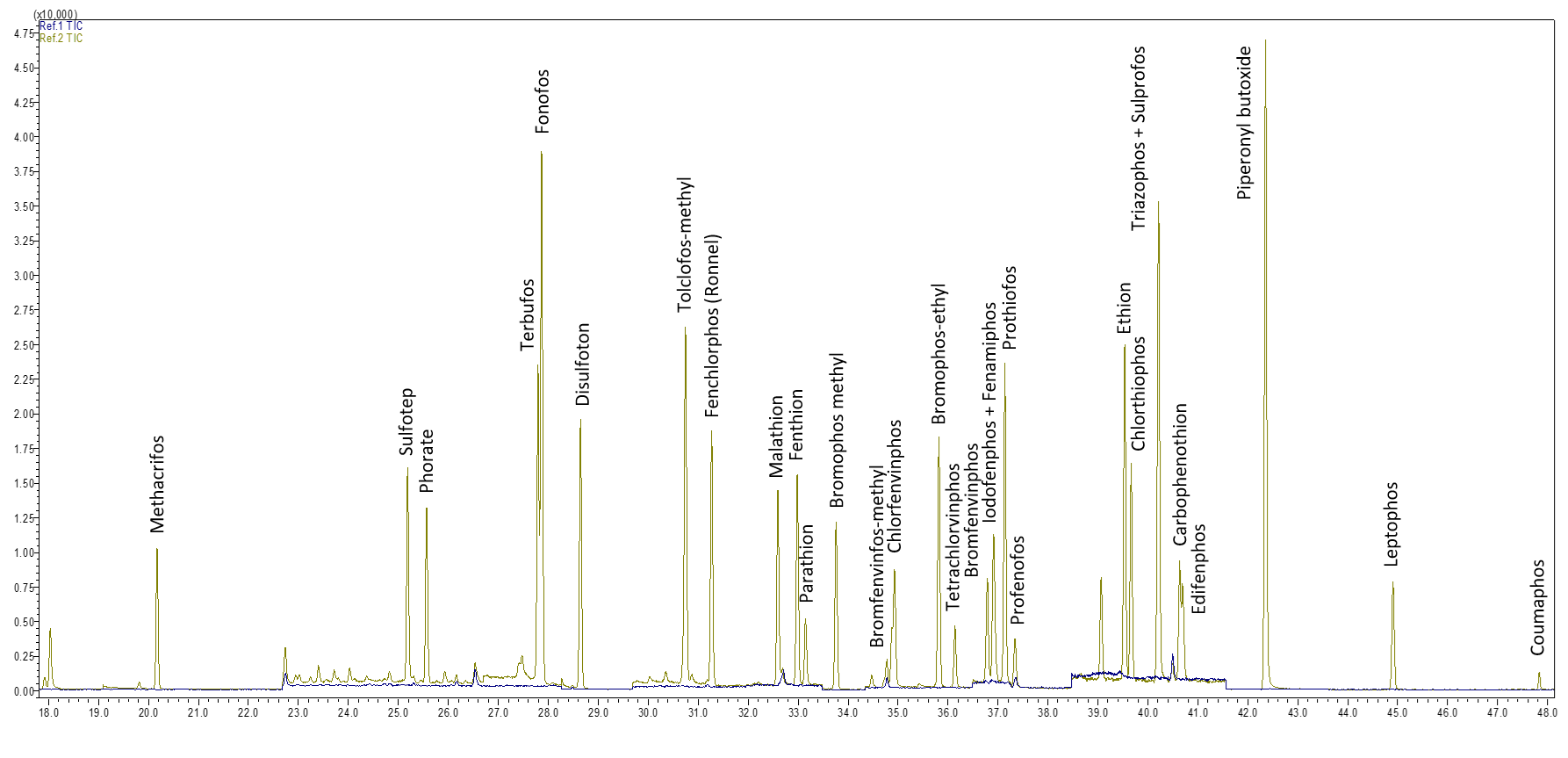
GC-MS analysis of a blank juice (black)and pesticides mix spiked sample
(yellow).
Micro-SPE applications on the PAL System
Micro-SPE has developed as the new standard for extraction, clean-up, concentration,
or filtration for automated green analytical workflows. The design of the new PAL µSPE cartridge allows for the
reliable automated processing with high sample throughput, accomplishing the principles of green sample
preparation.
The new PAL µSPE cartridge consists of two parts (see figure below). The polymer
material used is chemically inert and free from leachables. The outer part (1) provides a higher capacity and
flexible volume for filter disks (3) and the sorbent material (4). The bottom outlet is designed to penetrate
pre-slit septa and to deliver directly to LC injection ports. The inner plunger (2) provides critical
functionality with the compression of the sorbent/filter layers, and a precise needle guide for safe and upright
transport. An essential feature is the ability to withstand high pressure and prevent leakage around the syringe
needle, which allows for faster loading of larger sample volumes. Applications range from food pesticides,
water, and drug analysis to forensic and pharmacological applications
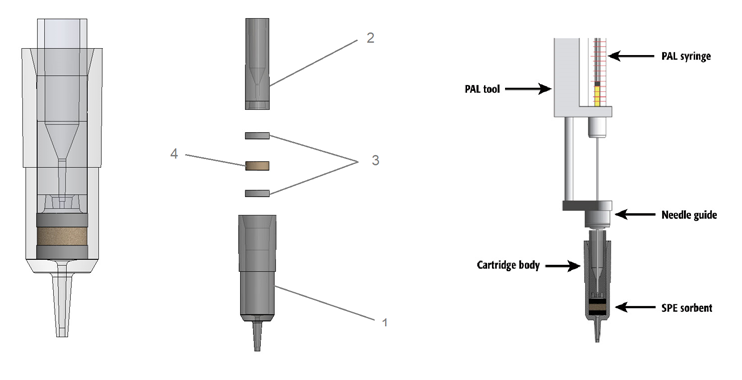
The new PAL µSPE cartridge
The recent publication by Nicolas Michlig and Steven J. Lehotay9 (US
Department of Agriculture, Wyndmore PA, USA) evaluated the novel septumless µSPE cartridge with high extract
load flow rates in the range of up to 10 µL/s, using extract volumes of up 600 µL. More than 250 pesticides
were tested using the QuEChERSER methodology with LPGC-MS/MS analysis, which achieved recoveries of 80 to 120%
for more than 260 pesticides. Optimization experiments led to a routine extract load volume of 500 µL at 5
µL/s flow rate.
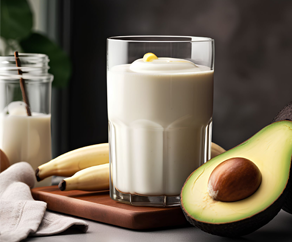
The evaluation of the automated clean-up using the novel PAL µSPE cartridge design
for multiresidue analysis of polar pesticides by LC-MS/MS was reported by Lorena Manzano Sanchez, Florencia
Jesus, and co-workers10 (EU Reference Laboratory for Pesticide Residues in Fruits & Vegetables,
Almeria, Spain). Improved recoveries were achieved for acidic compounds and sulfonylureas. A significant
increase in sample throughput, reduction of LC-MS matric ion source effects, and high reliability of the
automated method is reported.
Do micromethods work for both solids and liquid samples?
The trend towards micromethods, which can be used for both solids and liquids,
demonstrates a growing demand for these techniques within the analytical community. With an annual average of
more than 1000 publications for micromethods in sample preparation11 there is the strong
tendency towards miniaturization in all areas of chemical analysis12. These activities fit well and
support all endeavors for a truly green sample preparation in chemical analysis . The application of
micromethods with the PAL System can benefit labs in food, pharma, life sciences or environmental analysis
alike.
The best-known examples of automated sample preparation for volatile and
semi-volatile analytes (VOCs, SVOCs) are the static and dynamic headspace methods. However, are headspace
methods truly micromethods? By definition, they are. Although typically not named as micromethods, we often
subsume them as only small volumes of 'gaseous extracts' with less than micro amounts of analytes
taken from the sample vial for analysis, followed by direct chromatographic analysis.
Switching from static headspace to dynamic headspace sampling couldn't be
easier on the PAL System. To do this, the user needs to simply place the dynamic headspace tool into the PAL
System (see graphics) and benefit from highest headspace sensitivity, even for important low-level compounds,
e.g. the odor intense sulfur compounds13.
Working principle of ITEX-DHS
SPME and SPME Arrow on the PAL System
SPME is a cornerstone microextraction technique whereby analytes are extracted from
a gaseous or liquid sample by absorption in, or adsorption on, a thin polymer coating fixed to a solid surface
of a fiber. SPME combines analyte sampling, isolation, and enrichment into one single step. After extraction,
the fiber is removed and inserted directly into a chromatographic instrument, usually GC or HPLC, for desorption
and analysis.
PAL System provides a wide range of SPME fibers as well as the more rugged and more
sensitive SPME Arrow device for routine high-throughput sample preparation.
SPME Arrow provides up to 10x more sensitivity compared to classical SPME, enabling
reliable and robust immersion extraction.
How do different extraction techniques compare?
The diagram below outlines the working ranges of the different techniques for GC
headspace or immersion extractions.
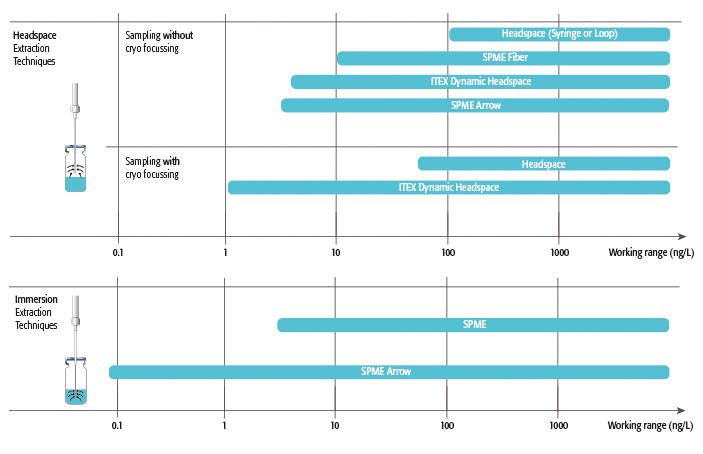
How does the PAL System enable micromethods?
PAL Systems offer a wide range of tools, with static and dynamic tools available for
volatile analysis (VOCs). For example, the classical incubator and agitator is used for bringing the sample to
extraction temperature. A heated syringe is used for static headspace analysis. Dynamic headspace methods are
performed using a sorbent material filled syringe needle operated for extraction by the plunger strokes of a
heated syringe (ITEX DHS). Tenax TA™ or Carboxen™ materials are the typically applied sorbents with ITEX DHS for
the collection of the (semi) volatiles. The analysis is carried out by thermal desorption into a GC injector.
Solid phase microextraction (SPME) enables fully automated solventless extraction
procedures, with a variety of SPME fibers, along with the robust and sensitive SPME Arrow device. This is
utilized for high-throughput headspace sampling (HS-SPME) and direct immersion applications (DI-SPME) of both
liquid and gaseous samples.
Liquid extractions from solids (solid/liquid extraction, SLE) or liquids
(liquid/liquid extraction, LLE) are handled by the PAL System in compatible vial sizes, by adding solvent to the
sample with liquid syringes or dispensers, via thorough vortexing and thermostatization. The dispersive
liquid/liquid microextraction (DLLME) further miniaturizes the process to a true green microextraction with
lowest solvent use and improved analyte concentration14.
Many classical clean-up methods are using solid phase extraction. The PAL Systems
offer SPE micromethods for sampling, concentration, and clean-up of liquid samples. The use of micro-SPE
cartridges (µSPE) for enrichment, clean-up and even for filtration of samples significantly reduces solvent
consumption and preparation time and often improves recoveries15. The processing of the well-known
QuEChERS method with the extraction and clean-up are popular examples in this emerging application area. For
LC-MS applications, µSPE cartridges inject on PAL Systems with clean-up or filtration directly into LC ports,
saving precious processing time for increased sample throughput.
PAL Systems work in prep-ahead and overlapping mode to use the chromatography time
for sample preparation, significantly improving the sample throughput. Sensitive samples are treated all on the
same time scale ready for analysis without any waiting time, providing the required comparability of results for
larger cohort studies. Automated tool changes and parallel operation with dual heads extend the range of options
and offer sophisticated sample preparation workflows.
Additional devices and features support even more complex workflows. Cooling,
pipetting, dispensing, de/capping, or centrifugation are typical functions integrated into automated workflows.
Many PAL System partners offer additional functionality with, for instance, sonication, thermal desorption,
powder dosing, weighing or LIMS connectivity as well-known functions to complete proprietary workflows.

